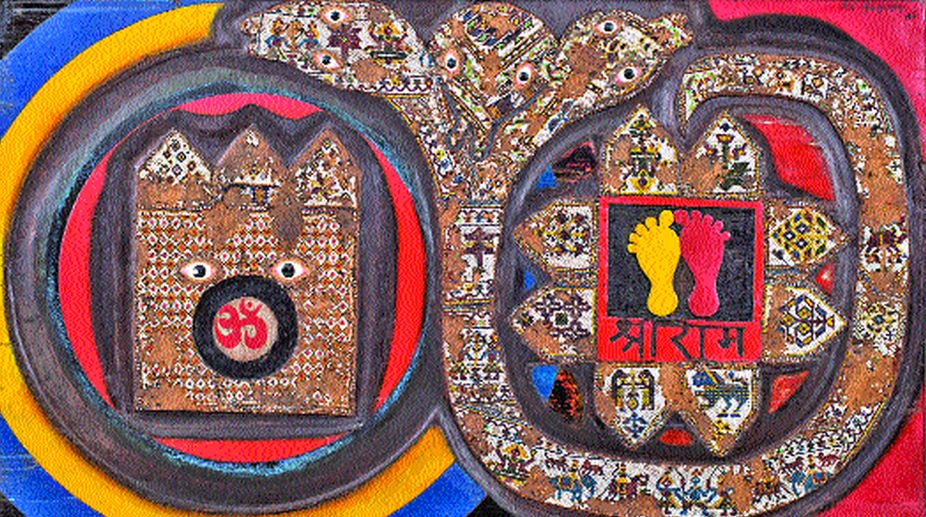A people’s person, Piraji Sagara carved wooden panels and presented post-Independence Indian abstraction through his artwork. An artist indifferent from his contemporaries, he did not work specifically with any fixed medium, his work is composed of deliberate and carefully considered materials, which includes water colour, pastel, relief work, ornamental scraps, glass bead fragments, metal and wood.
Unlike his coevals, he used his artwork to express important artistic meta-phors that communicates the travails of a dissipating culture. Coming from a family of traditional woodcrafters, he offered a distinct symbol of traditionalism in his artwork. He exhibited globally but after his health deteriorated, he could not focus much resulting in his last show at Chemould Gallery in 1984.
Advertisement
Tracing the development of his artwork from the mid 1950s to the early 1990s, Akara Art, Mumbai has opened an exhibition displaying his distinguished artworks until December 22. It is the first time, almost after 84 years, Pirajis’s art works have been opened to public. Known for his organic, textural works that incorporate collage, wood relief, and visually dramatic sculptural surfaces featuring fragments of metal, glass-beads, embroidery, and paint on blow-torched, burnt and carved wooden boards, the exhibition provides art admirers a chance to understand his art form and Post- independence scenario through his eyes. Puneet Shah, director of Akara Art talks about his knowledge and understanding of Piraji Sagar’s art.
Advertisement
Could you tell us about Piraji’s artwork— his style, mode of painting and sculpting sculptures?
Piraji had never restricted himself to any medium but his distinctive visual language finds expression in his inimitable wood collages. Hailing from a craftsman family his wood collages and abstract relief works are specimens of his ability to transform the igneous craftsmanship into insightful and eminent works of art.
His pictorial vocabulary was formed with the use of rusted iron nails, brass sheets, and pieces of carved wooden blocks, fragments of glass-beads embroidery on wooden boards, burnt wood and blending of these expressive materials.
Piraji has been a master in his field. Has he revealed any message in his abstract art? Or wanted the viewers to interpret it personally?
One cannot classify Piraji’s works as purely abstract. His imageries repetitively reflected his concerns with profound mystery of the relationship with man, nature, animal, birds and his surroundings. What he observed in portraits of people was the abstraction of life and the reality of his environment. His works questioned human existence, without following a particular political ideology.
What made his work different from other artists?
Piraji was one of the few artists who chose to be bold enough to create his own discourses in a distinctive way at a time period when the Baroda School of painters were concentrating on figurative art. What distinguished him from his contemporaries was his deep understanding of rich crafts and traditions of his surroundings, and his use of materials not as decorative elements but as innovations in texture and compositions and elevating them to high art.
How did you curate the art works? Does the exhibition have paintings as well as sculptures? How many works are at display?
There are 15 works in total. We wanted to show a body of works ranging from the late 1950s, when he graduated from JJ School of Art all the way to the late 80s covering a broader spectrum of his styles and to highlight his trajectory as an artist.
Advertisement











